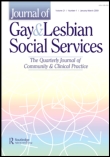Health care access and utilization among male sexual minorities in the US
 I had the opportunity to analyze data from the National Survey of Family Growth as part of a class project in the fall of 2011. This data set is unique in that it asks partipants detailed questions about their sexual behaviors and sexual identity. By utilizing data across all 4 years of the contigious survey, I was able to put together a data set with a decent number of male sexual minorities. My research question was simple: Are there disparities in access and utilization among men based on their sexual identity? The existing literature on this topic has several methodological weaknesses I was able to overcome by using NSFG data. While the measures of access and utilization were crude, our findings were interesting. Mostly because we found few disparities between the men based on sexual identity. Of course you should read the entire article for the full story but I’ve copied the abstract here.
I had the opportunity to analyze data from the National Survey of Family Growth as part of a class project in the fall of 2011. This data set is unique in that it asks partipants detailed questions about their sexual behaviors and sexual identity. By utilizing data across all 4 years of the contigious survey, I was able to put together a data set with a decent number of male sexual minorities. My research question was simple: Are there disparities in access and utilization among men based on their sexual identity? The existing literature on this topic has several methodological weaknesses I was able to overcome by using NSFG data. While the measures of access and utilization were crude, our findings were interesting. Mostly because we found few disparities between the men based on sexual identity. Of course you should read the entire article for the full story but I’ve copied the abstract here.
Disparities in health care access and utilization among male sexual minorities in the United States were explored using data from the National Survey of Family Growth (N = 8,846). Bisexual men had a small disadvantage in health insurance coverage but no differences were found in health insurance or consistency of coverage between gay and heterosexual men. Gay men were more likely to have a usual place of care, but were not more likely to utilize services. The current study provides inconclusive evidence for systematic disparities in health care access and utilization among gay and bisexual men in the United States.